Glue blocks and rub joints with hide glue
In both antiques and modern furniture, you'll often find glue blocks under a top or base and around furniture feet. Hide glue's uniquely quick tacking makes it simple to add them.One aspect of protein glues that is essential to building furniture is how quickly it tacks up, so quickly that many times you don’t need clamps. The technique is called a rub joint. You rub out the air in a joint, and the absence of air creates a vacuum. Essentially, atmospheric pressure clamps the joint firmly with 14 lb. per square inch, which is plenty to hold something like a glue block.
In both antiques and modern furniture, you’ll often find glue blocks under a top or base and around furniture feet. Furniture makers don’t want to put a lot of nails in their pieces, and you can’t get in there very easily with screws, which were very expensive back in the day. So why not just use the bonding power of the glue and its fast tack to hold glue blocks in place?
One thing I’ve discovered from working on antiques analytically, like an archaeologist looking at the tool marks trying to figure out why they’re there, is that in every antique that I’ve ever seen that was built before the Civil War I found toothing marks on the glue surfaces.
The chamfered glue block
A glue block is made by taking a stick and planing it so that one corner is 90°. On the opposite corner is a handplaned chamfer. This would likely have been the job of the apprentice–preparing batches of glue blocks for the master to use when he’s ready. But why is the chamfer there? It’s an extra step. It’s not aesthetic; this is a block that will never be seen by anybody except the maker.
Well, it takes a lot of work to make a glue block. A jointer plane is used to shape the wood straight on all sides and to chamfer the edge. The apprentice uses a tri-square to see that it’s 90° as it should be. And then on the two 90° surfaces, he uses the toothing plane to create a toothed surface. Then he uses a handsaw to cut the longer stick into short blocks. Finally, he puts the blocks in a box for the master to use when he’s ready.
So now as a master, I want to work quickly when building a piece. Say I have an area where I want to put a glue block. I put the glue on, reach in the box, and pull out a block. Immediately, I can feel where the chamfer is, and that means I know which two sides are 90° toothed. I can quickly put the glue on it, rub it into the joint, squeeze out the air, and walk away. I don’t have to clamp it. When the glue dries, it’ll be as hard and permanent as if you put nails in it.
To prove my theory that this was something done in a pre-industrial shop by an apprentice working for a master, after the Civil War when tools were produced that could make 90° on all four sides easily, the chamfer was no longer used. No matter how I grab a machine-made block, it’s 90° on each side. I don’t need to care about which side is the good side.
The rub joint
A similar application to the glue block is called a rub joint. It’s the same idea, but is usually used when edge-joining two boards. You apply glue to the two surfaces that you’re going to join, and rub those surfaces together. That’s all; it will hold once the glue cures. No clamps are needed, only atmospheric pressure.
One advantage of protein glues over synthetic glues is that as they cure, they contract, pulling the wood together. This does not happen with synthetic glues. It’s a function of the molecule itself, and that’s an interesting feature of protein glues.
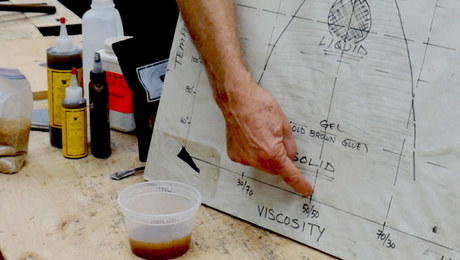
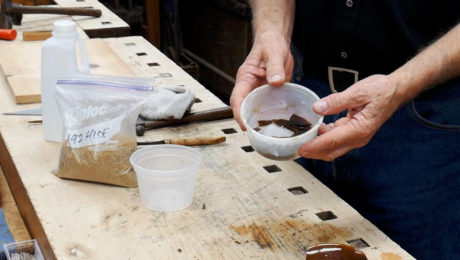
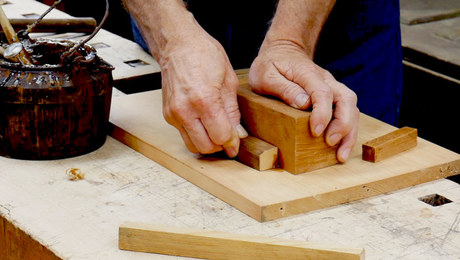
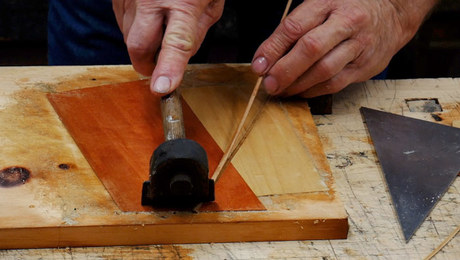


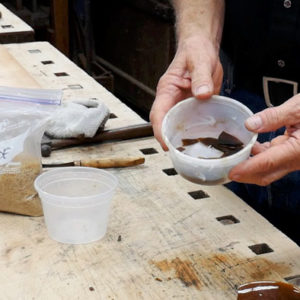

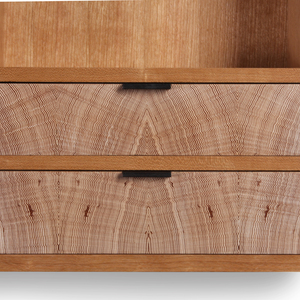
















Comments
Hello Patrick,
Great series on protein glues. Do you create a toothed surface on the edge of a board before using the "rub joint" technique to assemble a larger panel?
I had the same question. Also, something about hide glue joints for a table top just makes me feel uncertain. Will they really be strong as something like Titebond? Probably irrational on my part since furniture made with it has been around for centuries. It would be wonderful to be able to glue up the 60" tabletop I'm working on without clamps!
Do the same concepts apply when using liquid hide glue like Old Brown Glue?
Log in or create an account to post a comment.
Sign up Log in